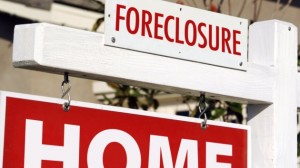
Foreclosure activity was down nationally, but result varied considerably across the nation's local markets.
Foreclosure filings, which encompass default notices, scheduled auctions and bank repossessions, were the lowest in April in five years, according to the latest data from RealtyTrac.
The 188,780 filings for April were a 5 percent decline from March and a 14 percent drop from April 2011. Overall, one in every 698 U.S. housing units had a foreclosure filing in the month.
Brandon Moore, the CEO of RealtyTrac, said the declines may be deceptive, given the local nature of foreclosure markets.
“Rising foreclosure activity in many state and local markets in April was masked at the national level by sizable decreases in hard-hit foreclosure states like California, Arizona and Nevada,” Moore said. “Those three states, and several other non-judicial foreclosure states like them, more efficiently processed foreclosures last year, resulting in fewer catch-up foreclosures this year.”
Indeed, the judicial/non-judicial divide has become increasingly marked, as foreclosure inventories continue to linger in certain markets. Just last week, Foreclosure-Response released its own foreclosure data with particular emphasis on the distinction.
In RealtyTrac’s data, foreclosure activity in the 26 judicial states was down 3 percent from March to April but up 15 percent from April 2011, with monthly activity falling in 14 of the states and yearly activity increasing in 15.
In Chicago, activity was down 7.63 percent monthly but up 25.52 percent from last year. Overall, 11,840 filings were filed for the metropolitan area, or 1 in every 321 units. For Chris McComas, though, a broker with @properties in the West Loop, said he is actually not seeing much foreclosure activity in the heart of the West Loop, and the foreclosures that are on the market are not fetching the extreme discounts they used to, considering that market prices are lower and banks are more organized in their treatment of the properties.
Foreclosures, though, are still present, he said, but are often restricted to individual buildings, rather than streets or sections of the neighborhood – if anything, an even more hyper-local dimension to the already local nature of real estate.
“You need to look at each building as its own community,” McComas said, adding that “healthy buildings” without foreclosures (which are the specific buildings he is currently working with in his area of the West Loop) are in high demand and competitively priced; other buildings, by contrast, are so riddled with foreclosures that “you just don’t go near them,” such are the comps.
Foreclosure starts were similarly local-driven. Though nationally, starts were down 4 percent from march and 2 percent from April 2011, 26 states posted monthly increases and 27 year-over-year increases. States with the biggest annual increases in foreclosure starts included New Jersey (180 percent), Utah (179 percent), Indiana (49 percent), Pennsylvania (44 percent), Florida (43 percent) and Michigan (42 percent).